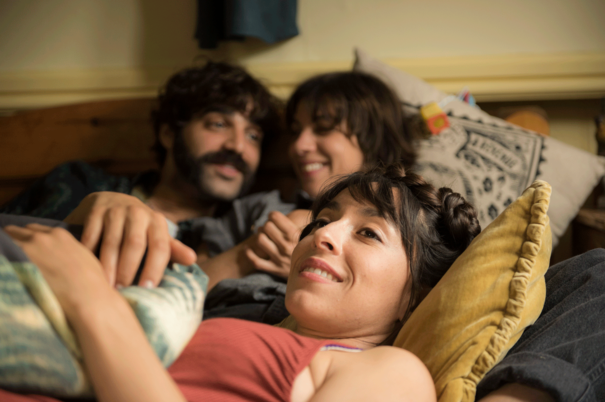The Force of Concrete
Eduardo Cruz

Anchor and Hope
In Carlos Marqués-Marcet’s 10,000 km (2014), the physical distance separating the characters operated as an element of third-party discord within a couple. In his most recent film, ANCHOR AND HOPE, the director returns to the question of space in the dynamics of a relationship. Eva and Kat are a gay couple who live in a houseboat docked on the banks of a London canal. Their unusual lifestyle is contrasted, however, with the characterization of the couple itself, which is not free of generalizations: whereas Eva represents innocence, Kat seems to fit with the tomboy stereotype. The harmony is interrupted by the arrival of Roger, a friend of Kat’s, and by Eva’s wish to have a child, along with the idea that, by their all joining forces to allow Eva to get pregnant, a happy family might be formed.
The tone of the narrative is underpinned by the visual treatment, which belongs to the indie pop current in contemporary British cinema. This weakens the supposed reflection on subversive maternity, as the relationship that is in fact established is no more than a bourgeois fantasy of female homosexuality.
Told in four chapters, the film suffers from the need to leave nothing unsaid. The ending is the clearest symptom of the film’s general problem: well executed on a technical level, it seeks to leave the door open to possibilities, but when the image cuts to black, the excess of certainties, rather than allowing viewers to float on a river, strikes them with the force of concrete.

